Recently I’ve traveled to Tokyo and Nara. One is the new capital, famous for its sprawling metropolitan landscape and population density while the other is the historical capital, perhaps now best known for cultural assets and (mostly) friendly deer.
In Tokyo I constantly noticed traditional culture jammed in between the concrete and railways, which I thought was fascinating. The most interesting to me was Meiji Jingu, or Meiji Shrine, located just a few hundred steps from Harajuku Station on the Yamanote Line that circles around central Tokyo. As I stepped out of the station, it was obvious that I was in Tokyo. There were tall buildings, little restaurants jammed together in a line, and dozens of people waiting for the pedestrian green light (since people hardly ever cross streets when the pedestrian light is red in Japan). But after going down the street a little ways and turning right, I was already on shrine grounds.
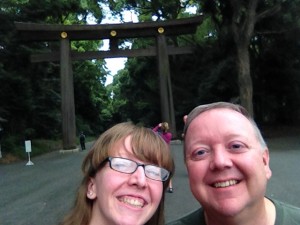
Dad came to visit me in Japan! This is the torii, or gate specific to Shinto shrines, beyond which everything is considered ritually pure.
Most of the shrine complex is a dense, towering forest that is somewhat reminiscent of the forest in the Ghibli movie, Princess Mononoke. Visitors are not allowed to freely wander beneath the trees, making it even more mysterious. Moreover, the trees dampen the sound of the city to the point where you can sometimes forget that you’re right in the middle of the most densely populated city in the world. There’s also a lovely inner garden where Emperor Meiji and his wife, Empress Shoken, used to go. It was really incredible to be where they were, since they were so incredibly important to Japanese history.
Dad and I also went to Rikugien, or “Six Principles of Poetry Garden,” and Edo Period garden originally built by a samurai and official of the Tokugawa Shogunate under the fifth shogun. It features scenes recreated from eighty-eight famous poems, besides being a gorgeous garden. Rikugien is also in the middle of Tokyo, only two stops away from the Yamanote Line, and though you can sometimes see skyscrapers over the tops of the trees, it is still quiet and peaceful.
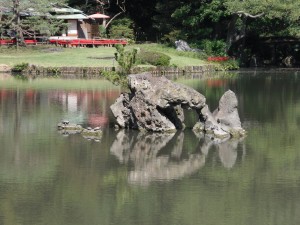
A recreation of Horaijima, which my Japanese friends recognized immediately when I showed them this photo
On the other hand, Tokyo also has much to offer for people interested in its urban side. There are more restaurants and stores than I cared to count near Shinjuku and Shibuya Stations.
We also went to the top of Tokyo Tower, where all we could see was city from the base of the tower to the horizon. If I hadn’t been to the little forest of Meiji Jingu and quiet Rikugien myself, I probably would have found it hard to believe that they coexisted with the cityscape in front of me.
The week after I went to Nara with some friends. Nara was the ancient capital of Japan over a millennia ago and is now famous for its temples and deer that, as a result of their revered status as servants of the gods, have become comfortable around people.
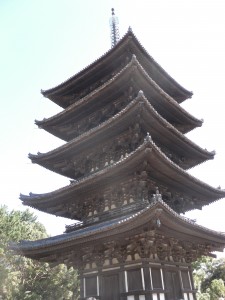
Five storey pagoda at Kofukuji, the second tallest pagoda in Japan and originally placed in Nara in 710
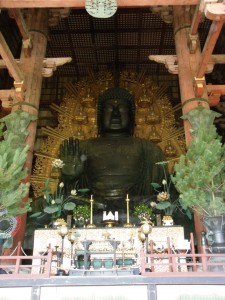
The 15 meter tall statue of the Buddha Vairocana, the largest in the world, located at Todaiji in Nara
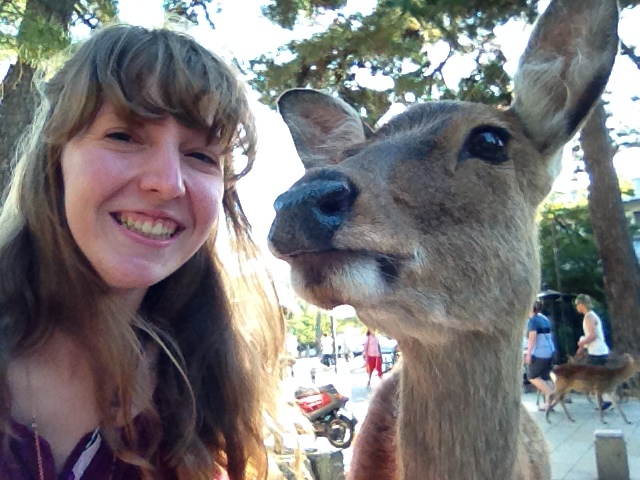
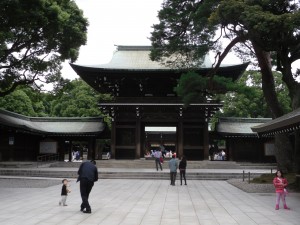

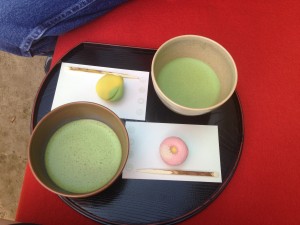
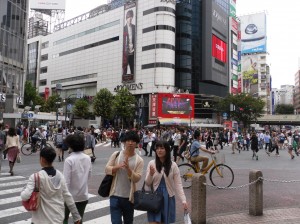
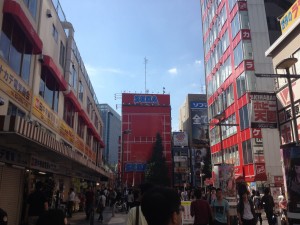
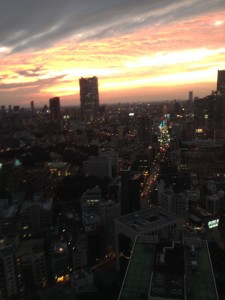
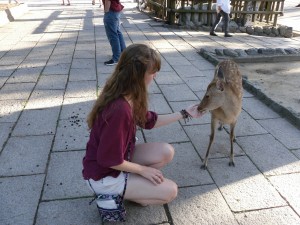

October 2, 2014 at 9:54 pm
Great post! 🙂